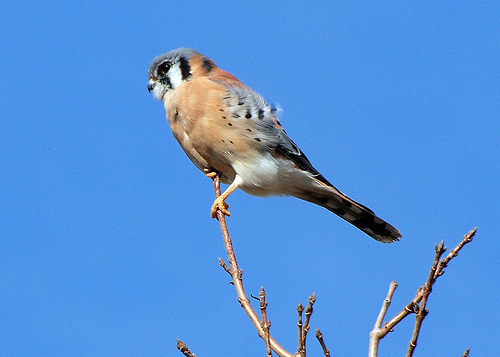 “One autumn day, 15 years ago, I found myself perched on a ladder that was leaning against a highway sign on Interstate 89 somewhere in Vermont. There was a wooden box clamped to one of the sign poles at least 15 feet off the ground, although fear may have exaggerated that memory. I was providing a little autumn house-keeping for one of those nest boxes so it’d be ready when the kestrels returned to breed the next spring,” writes guest blogger Madaline Bodin in Adirondack Almanack.
“One autumn day, 15 years ago, I found myself perched on a ladder that was leaning against a highway sign on Interstate 89 somewhere in Vermont. There was a wooden box clamped to one of the sign poles at least 15 feet off the ground, although fear may have exaggerated that memory. I was providing a little autumn house-keeping for one of those nest boxes so it’d be ready when the kestrels returned to breed the next spring,” writes guest blogger Madaline Bodin in Adirondack Almanack.
“The box was one of 10 kestrel nest boxes then deployed along the interstate by the Vermont Agency of Transportation, or VTrans. It’s a feel-good project started in 1995 with $40, some scrap wood, and plenty of volunteer hours from VTrans employees, who built the boxes on their own time. Since then, about 90 kestrels have fledged and four orphaned young were fostered in the boxes. That’s a lot of bang for the buck, or rather, a lot of birds for the box.
“The American kestrel – found in New York, Vermont and New Hampshire (and throughout North and South America) – is the smallest falcon in North America. They are tiny for a raptor – about the size of a blue jay – but are fierce predators…..
“Fifteen years ago, three of the highway nest boxes hosted breeding kestrels. There was hope that more of the boxes would be used as kestrels discovered them. They haven’t, but that may be because there just aren’t enough kestrels around to use them. Kestrels are in slow decline in much of North America and have been for over 30 years, but are currently listed as a species of “least concern” on the endangered species list….” Read whole article here.
